Diffusion and osmosis
1/39
Earn XP
Description and Tags
channels, diffusion
Name | Mastery | Learn | Test | Matching | Spaced |
|---|
No study sessions yet.
40 Terms
diffusion
random movement of particles (in chemical)
when there is a concentration gradient diffusion goes
DOWN the gradient
simple diffusion
no barrier or the ion/molecule is fully permeable
semipermeable membrane
permeable to some ions/molecules (selective), but not other ions/molecules
facilitated diffusion
ex) glucose
either channel or carrier to move ion/molecule thru membrane
still down the gradient
carriers have specificity and saturation
glucose: 135 → 5 mM
carriers are amino acids
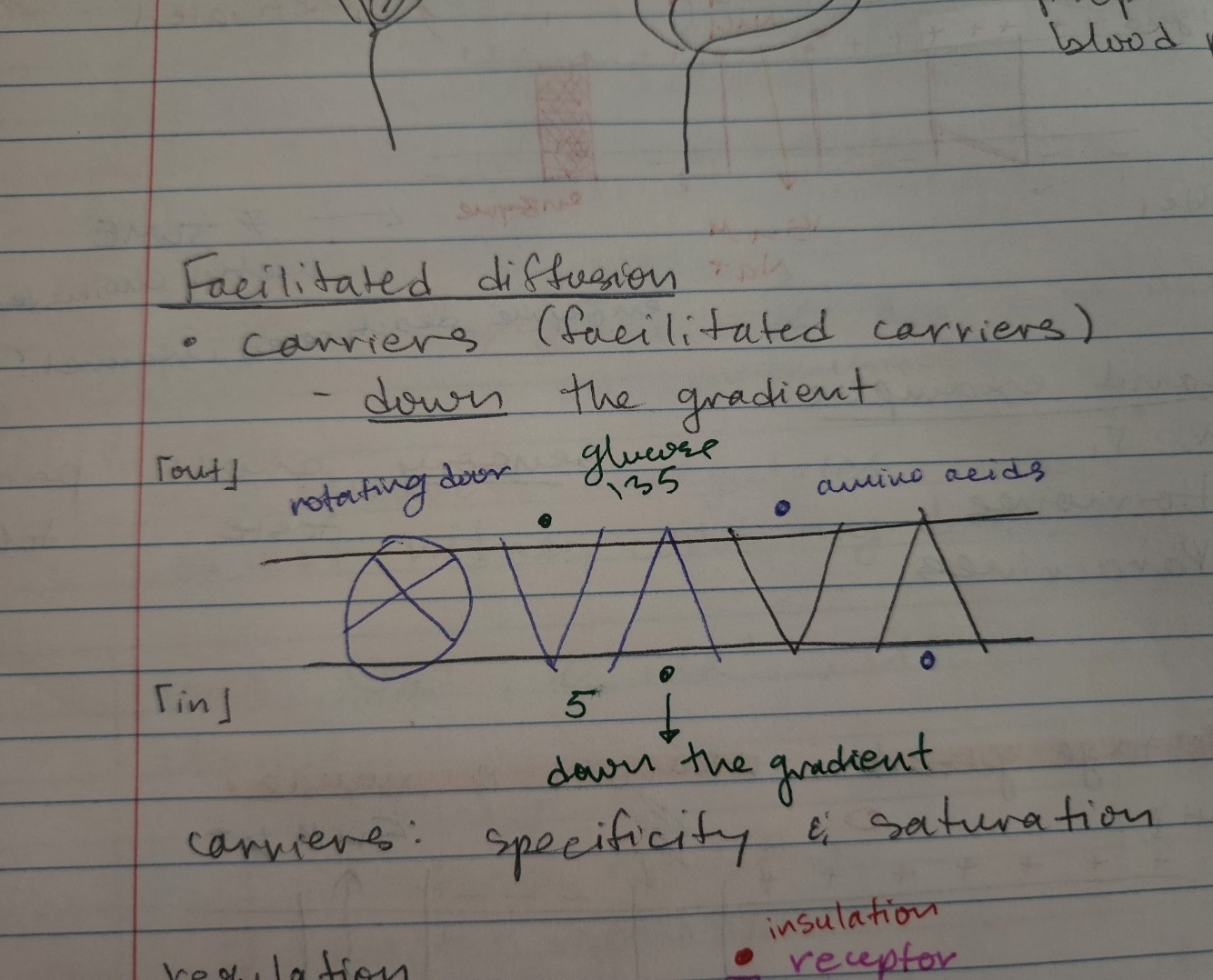
channels:
what they have, function, what for
have specificity for size, shape, and charge
can saturate opening
change location of ion molecule, cant change chem bonds
flow is down gradient
h2o and ions
water channels are called
aqua pores, always open
channel between outside and inside cell thru cell membrane
are unregulated except kidney collecting duct
isotonic
same osmolarity/concentration/tension
hypotonic
high solute inside cell, less water inside cell
outside water flows in because there is less concentration of solute outside cell
hypertonic
more concentration of solute inside cell
low solute inside cell, more water inside cell
water moves out
describe (basic) diffusion of O2, CO2, and Na+ in cell
through the phospholipid bilayer O2 has simple diffusion into cell, CO2 diffuses out of cell, Na+ is facilitated through channels into the cell
what is concentration gradient
energy source (not ATP), like a water wheel
channels for ions are either (3)
open (rare)
leak channels (small amounts go thru)
gated channels (regulated like enzymes)
allosteric
covalent
osmisis
spontaneous net movement of solvent molecules, typically water, through a selectively permeable membrane from a region of higher water potential (lower solute concentration) to a region of lower water potential (higher solute concentration)
to equalize concentrations to achieve equilibrium
restricts the movement of solute particles
what do all channels have (3)
specificity
allosteric regulation
covalent regulation
what is allosteric regulation
mechanism by which the function of a protein, such as an enzyme or receptor, is modulated by the binding of a regulatory molecule (an allosteric effector or modulator) at a site distinct from the protein's active site
when the saturation channels are full
channels move ions (change location)
down concentration gradient
gated channels
they open/close
some always open (rare)
leak channels
what are the 4 mechanisms of gating
ligand-allosteric
voltage gating
mechanical gating (sensory)
covalent/enzyme
describe ligand gated channels
charged in/out the cell
ions and concentrations
enzyme
activation
motor, allosteric regulation
in cell negative, out cell positive
150mM Na outside, 15mM inside
Acetylcholinesterase (AChE)
deactivation when reached enzyme
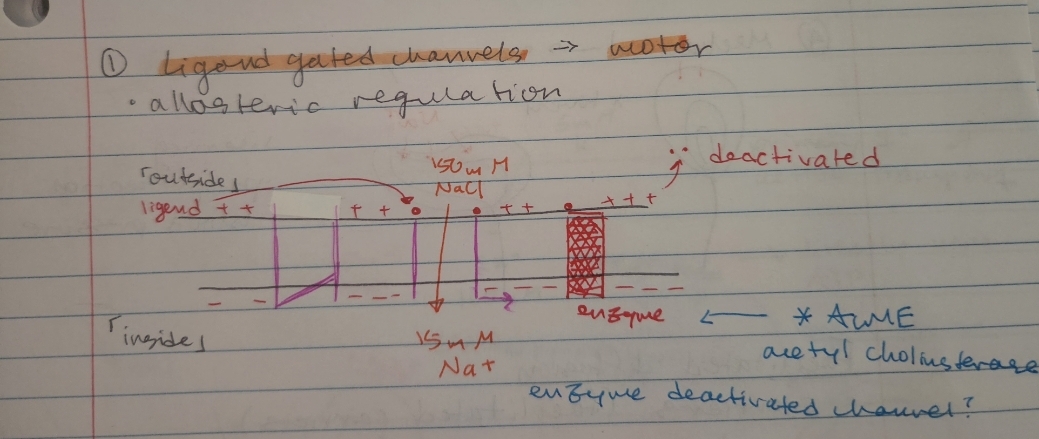
Acetylcholinesterase (AChE)
an enzyme that catalyzes the breakdown of the neurotransmitter acetylcholine into choline and acetic acid
ligand gated channels examples and function
for sensory (smell, pain, taste, itch)
NT
hormones
paracrines
describe voltage gated channels
charged in/out the cell
open/closed channel
ions and concentrations
mV charge
neurons and muscles
K+ ion, 5mM outside, 160mM inside
closed channel: positive outside, negative inside
open channel: negative outside, positive inside
opens with electrical charge
-70mV inside
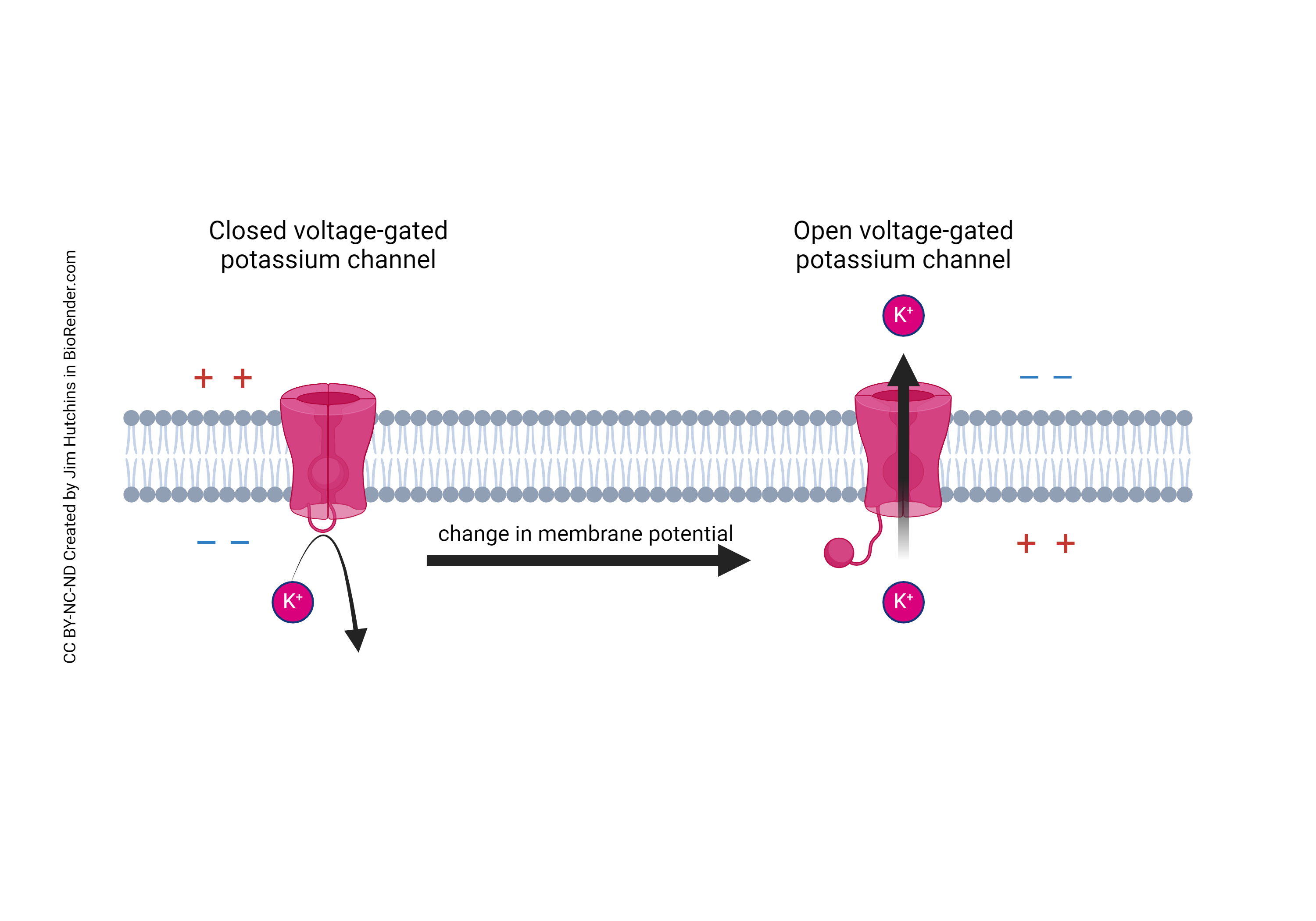
describe enzyme gated channels (?)
ions and concentrations
1mM Ca2+ outside, 0.001mM inside
kinase and Pi alone channel
slow channel, is rare
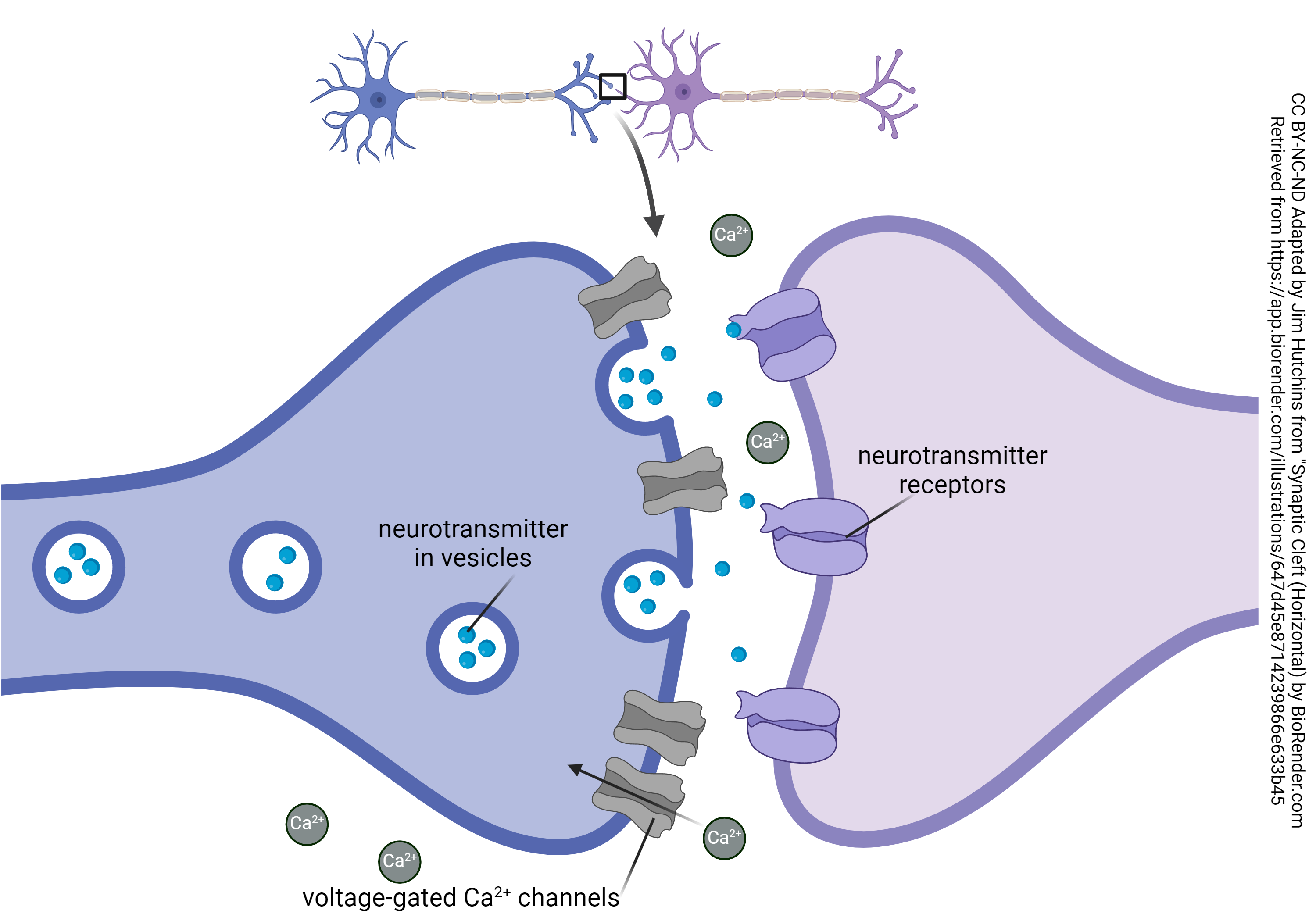
what is kinase
enzyme that catalyzes the transfer of phosphate groups from high-energy phosphate-donating molecules, such as ATP, to specific substratesd
describe mechanical gating
neuron type
ion
function
unipolar neuron
Na+ channel, squishes neuron?
for touch, hearing, proprioception, blood pressure
describe regulation of myelin
insulation and receptor allows ion to go in
vesicle has carriers
ion goes to inserted vesicles to have glucose carriers
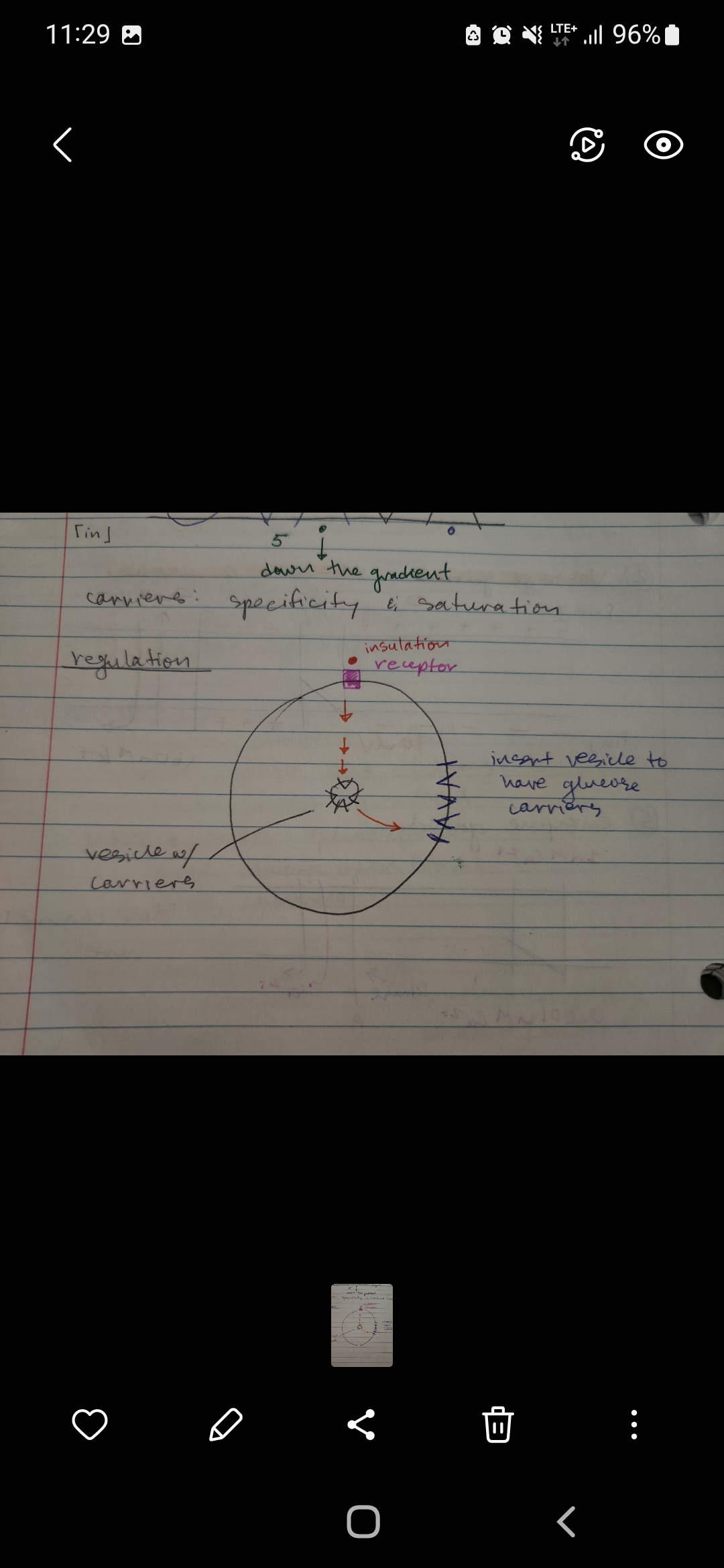
Describe up the gradient (short version) of primary 1 active transport
in the cell
out the cell
pump
150mM Na+ out, 5mM K+ out
15mM Na+ in, 160 2K+ in
1 primary ATPase pump (directly uses ATP)
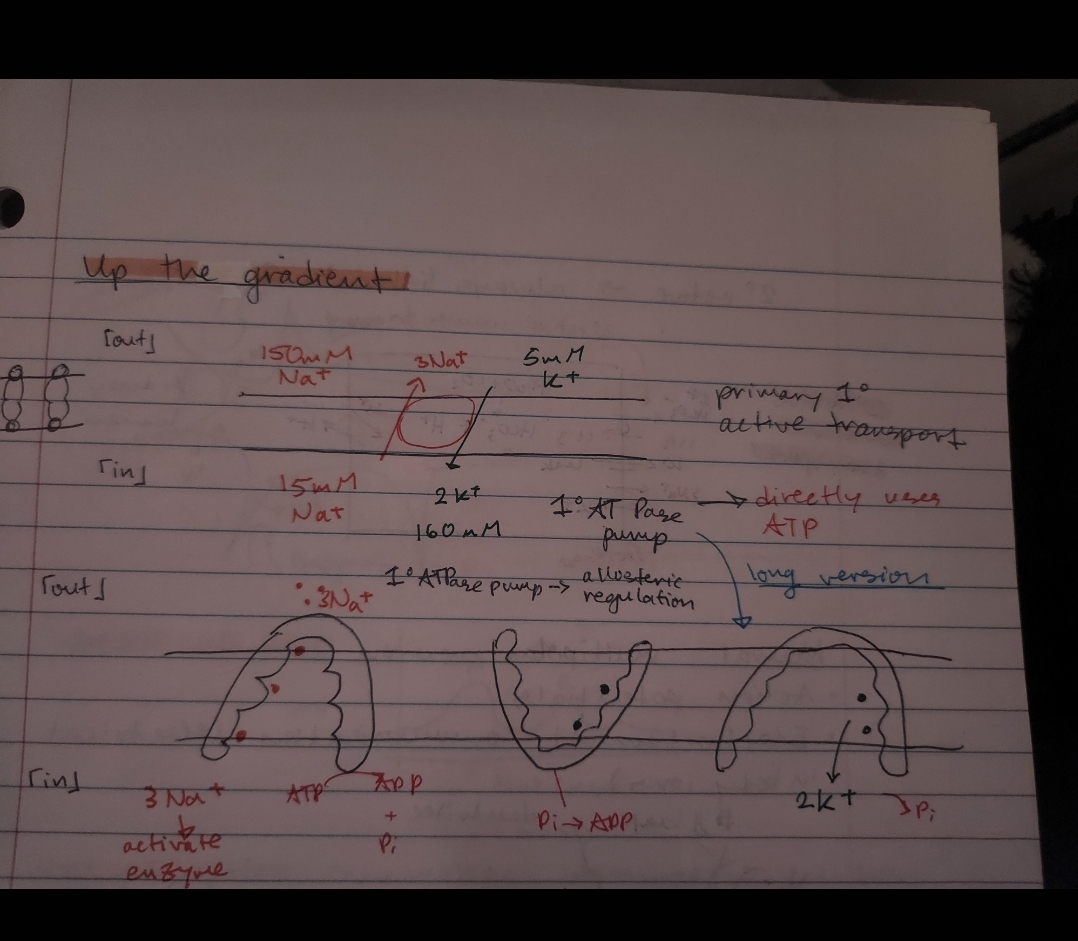
Describe up the gradient (long version) of primary 1 active transport (3 steps)
in the cell
out the cell
pump
3Na+ out the cell, goes into cell thru membrane, ATP turns into ADP and Pi
Na+ is the active enzyme
There is 2K+ in the membrane, with ADP and Pi
2K+ goes out the membrane into the cell, with Pi
Na+/K+ ATPase pump
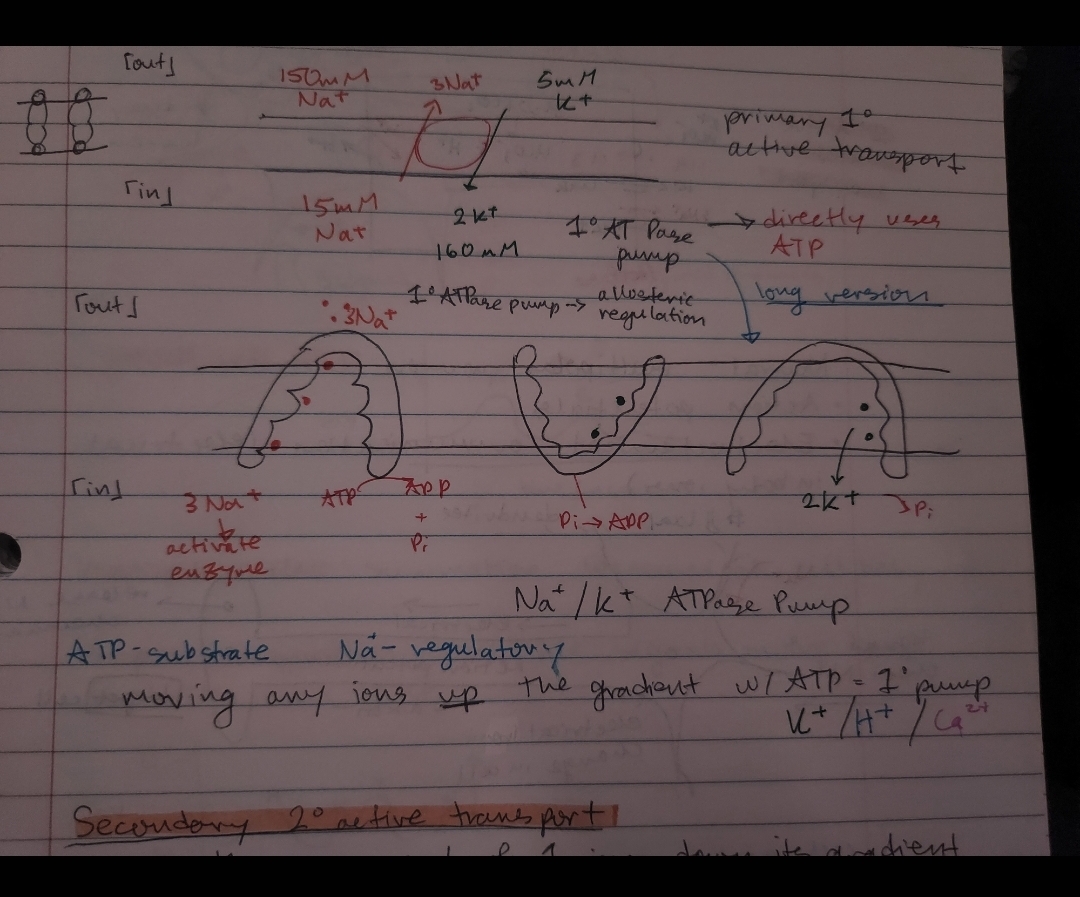
what is kind of substrate ATP
active substrate
moving any ions up the gradient with ___
ATP 1 primary pump
uses ATP hydrolysis
K+, H+, Ca+
Secondary 2 primary active transport uses what
uses the movement of 1 ion DOWN its gradient to move another molecule/ion UP its gradient
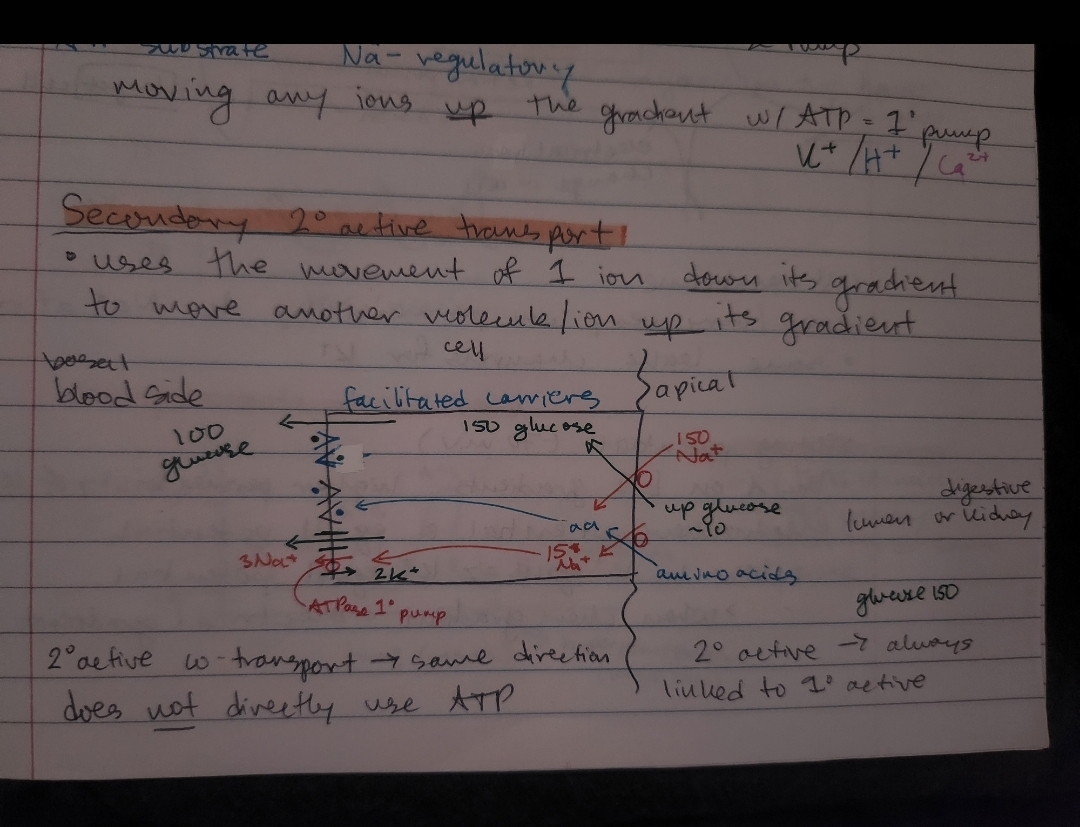
An ion would move up its electrochemical gradient only when? why?
energy is supplied to overcome the natural tendency of the ion to move down the gradient
essential for maintaining the resting membrane potential and cellular ion homeostasis
Without an external energy source, ions cannot spontaneously move up their electrochemical gradient
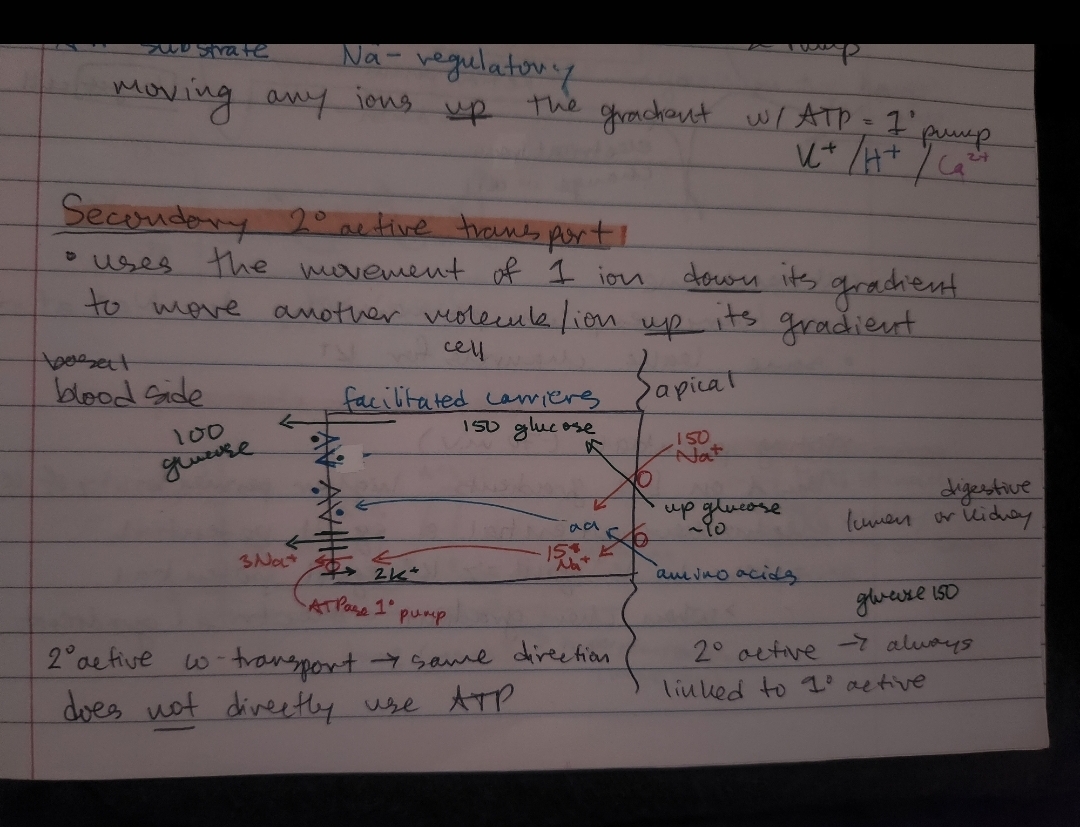
Primary 1 vs secondary transport
Primary active transport directly uses metabolic energy from the hydrolysis of ATP to pump molecules or ions across a membrane.
secondary active transport does not use ATP directly. Instead, it relies on the electrochemical gradient of one ion—typically Na⁺ or H⁺—established by primary active transport to drive the movement of a second molecule against its own gradient
while primary active transport generates ion gradients using ATP, secondary active transport exploits these pre-existing gradients to move other substances, making it indirectly dependent on ATP
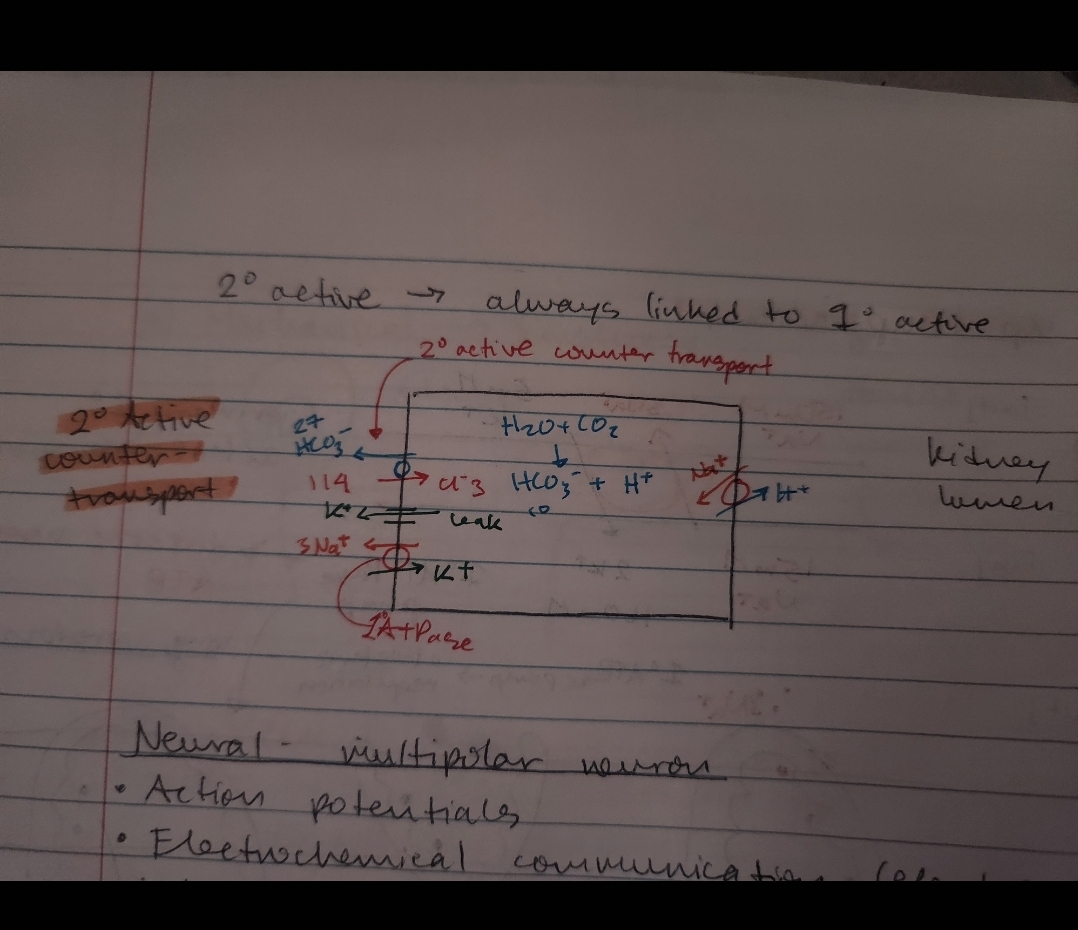
describe 3 changes of glucose concentrations from apical to basal
up glucose 10
150 glucose
100 glucose out
what is co-transport
same direction (one goes up one goes down)
has transporter
glucose and amino acids w Na+
from lumen to basal
counter transport
opposite direction, one goes out other goes in
Na+ and H+
from lumen to basal
sodium and potassium are always
primary, 1 primary pump use ATP
2nd prime co-transport
H2O follows sodium
diffusion down gradient
from lumen to basal